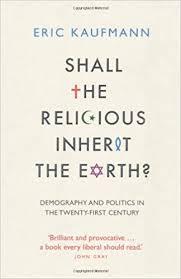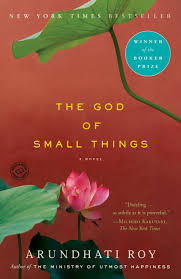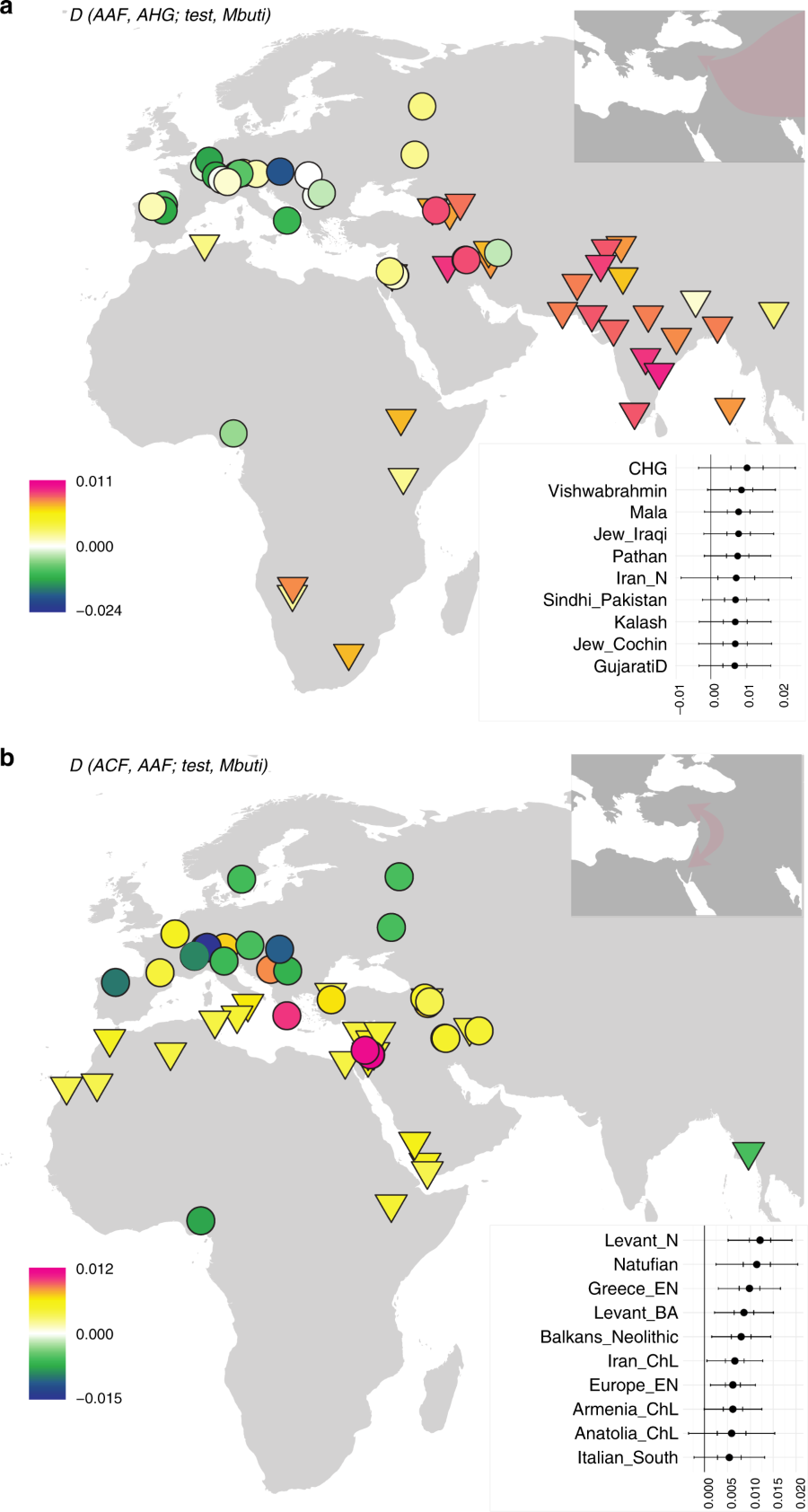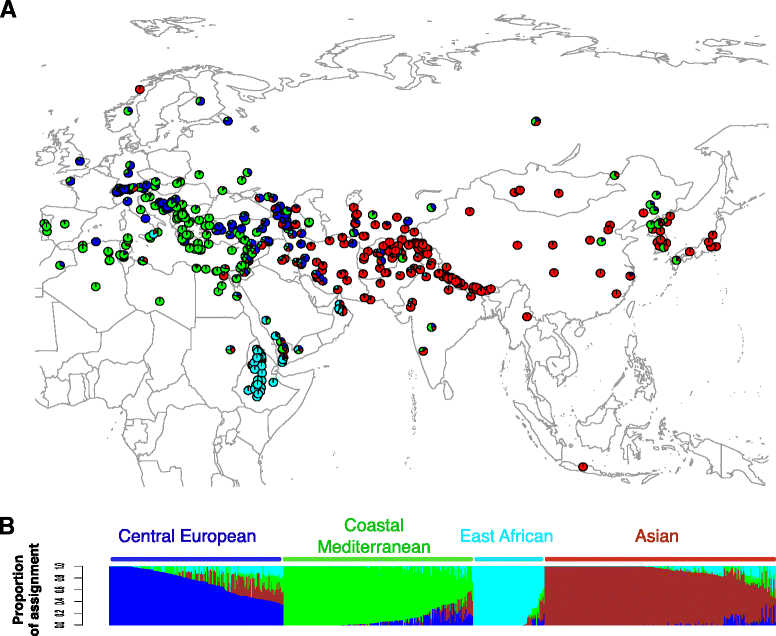Please keep the other posts on topic. Use this for talking about whatever you want to talk about.
Month: September 2019
JustKnecht’s Loom of Form & Meaning
Brilliant, IMO — and hopefully of use to Ali Minai and others in the field of artificial intelligence — here the Loom is, as JustKnecht presents it on Medium:
**

9 categories can be used to classify how forms, meanings and the connections between them change, develop and evolve in relation to each other. Put anything at the top left of this table, then:
**
Further readings:
The Loom of Form and Meaning
The Loom of Verbal Reasoning
Rattlesnake Games – Introduction and Example
Connecting forms to contexts in Rattlesnake Games
**
My own HipBone Games, like JustKnecht’s Rattlesnake Games, are inspired by Hermann Hesse’s Glass Bead Game as described in his novel of that name — and there’s enough kinship between them that Derek Robinson’s comments on my own games and Ai may be of use, mutatis mutandis, in setting a context for Rattlesnake Games, too:
Derek Robinson, HipBone Games, AI and the rest
**
Few things in life are as delightful as finding kinships of mind and heart.
Modernization leading toward confessionalization
From the comments:
I think what’s underappreciated is that hindu nationalism is partly caused by the collapse of the caste system. I know that may not intuitively make sense at first, but compared to when I was a boy the caste system has significantly weakened. People are finally starting to look at each other as hindus rather than by caste – and this has never been the case in the past. Obviously caste is still here and we all have a long way to go but it is substantially weakened and weaker than its ever been. I believe this is the major cause for the rise of hindu nationalism.
 One of the strange things that surprises many people is that modernization often produces stronger and more robust confessional identities. In Eric Kaufmann’s Shall the Religious Inherit the Earth? Demography and Politics in the Twenty-First Century he talks about the fact that urbanization and increased access to educational opportunities for the rural middle-class in Muslim countries resulted in gains in power to Islamist movements. The reasons are manifold, but one issue is that local power blocs centered around customary and traditional relationships and patronage networks were disrupted by development. In a flatter and more deracinated landscape simple and universal Islamist messages were appealing.
One of the strange things that surprises many people is that modernization often produces stronger and more robust confessional identities. In Eric Kaufmann’s Shall the Religious Inherit the Earth? Demography and Politics in the Twenty-First Century he talks about the fact that urbanization and increased access to educational opportunities for the rural middle-class in Muslim countries resulted in gains in power to Islamist movements. The reasons are manifold, but one issue is that local power blocs centered around customary and traditional relationships and patronage networks were disrupted by development. In a flatter and more deracinated landscape simple and universal Islamist messages were appealing.
You see the same process happening in Indonesia. Traditional Islam among the Javanese is syncretistic. But its power and strength are in the solidities of the rural cultural order which has deep local roots. Development and migration to urban areas result in a shift toward more world-normative (santri) Islam which is not contingent on local cultural and social frameworks.
In this model then the economic liberalization ushered in by the Congress Party in the early 1990s sowed the seeds for the emergence of a broad-based Hindu nationalism, as economic dynamism and urbanization begins to erode the older caste-based solidities.
The Indian cultural Left is in India, but not of India
 A comment on Twitter about the lack of the Islamic world’s own Arundhati Roys, and therefore the lack of Leftism. My own reaction is that this is wrong. There is plenty of Leftism in the Islamic world, just not the sort of cultural criticism that Arundhati Roy specializes in.
A comment on Twitter about the lack of the Islamic world’s own Arundhati Roys, and therefore the lack of Leftism. My own reaction is that this is wrong. There is plenty of Leftism in the Islamic world, just not the sort of cultural criticism that Arundhati Roy specializes in.
To give an example, the PLO has several Communist member parties, and its largest element, Fatah, is Left-nationalist. Though the high-tide of Marxism in the Islamic world, and the developing world in general, was in the 1970s, the ghost of Left-nationalism haunts us to this day (the Syrian Ba’ath party has its origins on the Left, though today it is basically an Assad family enterprise). India, there remains to this day a militant Marxist movement.
So what’s going on with people like Arundhati Roy? I think the best way to understand her is that she is part of the global English-speaking intelligentsia, and as such caught up in cultural currents which are beyond, and above, her Indian milieu. She applies the tools and concerns which are validated among the global cultural Left to an Indian context.
It’s not just an English-speaking phenomenon. There is a global elite cultural movement united by share mores and disposition. Consider the movements for gay rights in East Asia, which seem to be clearly shaped by Western precursors. But, I think the Indian English-speaking elite exhibits the tendency to imitate and replicate far faster than in other developing societies because of its shared cultural presuppositions and linguistic fluency with the Anglosphere.
The maritime origins of the Munda
A reader pointing me to a paper whose hypothesis is novel to me. But, I have to say that reading the paper, I am now convinced this is highly likely. The paper is The Munda Maritime Hypothesis:
On the basis of historical linguistic and language geographic evidence, the authors advance the novel hypothesis that the Munda languages originated on the east coast of India after their Austroasiatic precursor arrived via a maritime route from Southeast Asia, 3,500 to 4,000 years ago. Based on the linguistic evidence, we argue that pre-Proto-Munda arose in Mainland Southeast Asia after the spread of rice agriculture in the late Neolithic period, sometime after 4,500 years ago. A small Austroasiatic population then brought pre-Proto-Munda by means of a maritime route across the Bay of Bengal to the Mahanadi Delta region – an important hub location for maritime trade in historic and pre-historic times. The interaction with a local South Asian population gave rise to proto-Munda and the Munda branch of Austroasiatic. The Maritime Hypothesis accounts for the linguistic evidence better than other scenarios such as an Indian origin of Austroasiatic or a migration from Southeast Asia through the Brahmaputra basin. The available evidence from archaeology and genetics further supports the hypothesis of a small founder population of Austroasiatic speakers arriving in Odisha from Southeast Asia before the Aryan conquest in the Iron-Age.
For me, the Brahmaputra migration always implied that Bangladeshis should have lots of Munda ancestry. And yet that is not clear from genetics (though a few individuals are shifted in that direction). In contrast, they do have a strong affinity to the Khasi. This paper proposes that the Khasi are quite distinct from the Munda.
Rather, the Munda are placed further south, and their arrival in South Asia was through maritime means. One of the possibilities suggested is a relation to the Aslian subgroup of Austro-Asiatic languages in central Malaysia. This could actually help explain the enrichment for AASI in the Munda: the indigenous Negritos of Malaysia are similar to the people of the Andaman islands!
Remember, the arrival of Austro-Asiatic farmers in northern Vietnam dates to ~4,000 years ago. The Munda could be relative latecomers to South Asia…
Browncast Episode 67, Conversation with freelance academic Justin Murphy
 Another BP Podcast is up. You can listen on Libsyn, iTunes, Spotify, and Stitcher. Probably the easiest way to keep up the podcast since we don’t have a regular schedule is to subscribe at one of the links above.
Another BP Podcast is up. You can listen on Libsyn, iTunes, Spotify, and Stitcher. Probably the easiest way to keep up the podcast since we don’t have a regular schedule is to subscribe at one of the links above.
You can also support the podcast as a patron. The primary benefit now is that you get the podcasts considerably earlier than everyone else. I am toying with the idea of doing a patron Youtube Livestream chat, if people are interested, in the next few weeks.
Would appreciate more positive reviews!
This episode we talked to Justin Murphy. A very online “post-academic,” Murphy was until recently a political scientist in the UK. Today he has a popular YouTube channel and has relocated to the USA (where he’s from).
We talked about being an academic-without-institution, the recent embracing of his Roman Catholic background, and the general trends in culture, online and offline.
Last Will of Guru Gobind and Emperor Aurangzeb
From @parikramah ‘s blog, some comments on the last will and testament of Guru Gobind and Emperor Aurangzeb. (I am mostly interested in the two wills and posted those here.. if you are interested in the dharmic vs adharmic discussion you can to to the link above for the full post)
Continue reading Last Will of Guru Gobind and Emperor Aurangzeb
The Origins of the Neolithic in the Indian subcontinent
Last week was a good one for all those who had been waiting endlessly for the Rakhigarhi aDNA paper to see the light of day and also for the pre-print ‘The Genomic Formation of South & Central Asia’ to come out in a peer-reviewed journal.
Unfortunately, the talk around both these papers has quickly degenerated to only figuring out whether these papers support an Aryan Migration or whether they do not.
However, the combined data that has come out from these two papers is a treasure trove of information and this data has enormous implications for a lot of other theories of South Asian prehistory.
I wish to focus one post for each of these important discoveries starting with the important discovery about the antiquity of IVC ancestral population in South Asia and its implication for origins of farming in the region.

The graphical extract given above is quite self-explanatory. But let us also quote from the paper itself to re-inforce what the graphical extract implies :-
The Iranian-related ancestry in the IVC derives from a lineage leading to early Iranian farmers, herders, and hunter gatherers before their ancestors separated, contradicting the hypothesis that the shared ancestry between early Iranians and South Asians reflects a large-scale spread of western Iranian farmers east. Instead, sampled ancient genomes from the Iranian plateau and IVC descend from different groups of hunter-gatherers who began farming without being connected by substantial movement of people.
They elaborate on what the implications of this finding is –
Our evidence that the Iranian-related ancestry in the IVC Cline diverged from lineages leading to ancient Iranian hunter-gatherers, herders, and farmers prior to their ancestors’ separation places constraints on the spread of Iranian-related ancestry across the combined region of the Iranian plateau and South Asia, where it is represented in all ancient and modern genomic data sampled to date. The Belt Cave individual dates to 10,000 BCE, definitively before the advent of farming anywhere in Iran, which implies that the split leading to the Iranian-related component in the IVC Cline predates the advent of farming there as well…Thus, the Iranian-related ancestry in the IVC Cline descends from a different group of hunter-gatherers from the ancestors of the earliest known farmers or herders in the western Iranian plateau.

So the paper on the Rakhigarhi aDNA sample makes it abundantly clear that the geneticists find the Iran farmer/herder related ancestry in the IVC people to have split up from the actual Iranian farmers/herders atleast before 12,000 years ago. This is well before the origin of farming on the Iranian plateau. Therefore, the clear implication of this is that the Iranian Neolithic Farmers did not contribute ancestry to the ancestors of the Harappans but that the ancestors of Harappans and the early Iranian farmers/herders descend from a common ancestral source that existed more than 12 kya.
What was the place of origin of that ancestral source ? We do not know that as yet so to assume that it is coming from Iran, as some are doing, is not borne out by evidence. It may well have originated in South Asia before moving into Iran.
I have written at length on this topic at my blog.
Infact, the deep pre-Neolithic origins of Iran N like ancestry in South Asians was already becoming apparent that as early as 2011 when this major paper on South Asian populations made the following observation –
… regardless of where this component was from (the Caucasus, Near East, Indus Valley, or Central Asia), its spread to other regions must have occurred well before our detection limits at 12,500 years.
Even before this, in 2004, when a paper, by this very same Estonian team, on mtDNA lineages shared between Iran & South Asia had come out, it was already noted that the spread of shard mtDNA lineages between the two regions was quite old.
This separation between the South Asian & Iranian farmer/herder ancestry not just dates to before 12 kya but it likely dates to the very end of the Last Glacial Maximum, somewhere around 18-17 kya.

The above graphic shows the early split of mtDNA U7 across Eurasia. One can quite clearly see that the oldest splits seem to be between Iranian plateau & South Asia. This pattern is also observable for other shared mtDNA & y-dna lineages shared between these 2 regions. For more on this please refer to my blog.
Therefore, the Rakhigarhi provides one more line of evidence to re-inforce what was already evident from many previous studies on modern DNA, that the major portion of the shared ancestry between the Iranian plateau and South Asia was not brought into South Asia from Iran by the Iranian farmers but had separated from the ancestors of Iranian farmers/herders well before 12,000 years ago. With this Rakhigarhi paper getting such widespread coverage, one can only hope that from now on this fact will become known to much more people than it had been previously.
South Asian Neolithic
Since it has now become clear that there was no migration of early Iranian farmers into South Asia, so it has begun to be argued that farming must have been adopted by local NW hunter gatherers of South Asia through spread of ldeas from the fertile crescent.
While this is certainly plausible, it rests on the premise that farming began independently only once in the Fertile Crescent and it spread from there to everywhere else.
This is however not so straightforward. There are similarities at Mehrgarh with the Neolithic sites of the Eastern Fertile Crescent or the Iranian Neolithic but not with the Levant or Anatolian Neolithic. The archaeologist who discovered the Neolithic site of Mehrgarh and carried out decades of excavation over there, J F Jarrige, had this to say
The similarities noticed between Neolithic sites from the eastern border of Mesopotamia to the western margins of the Indus valley are highly significant. A sort of cultural continuum between sites sharing a rather similar geographical context marked with an also rather similar pattern of evolution and transformation becomes more and more evident. But the Neolithic of Mehrgarh displays enough original features to imply an earlier local background which has so far not been documented. Nevertheless the cultural dynamism shown by the inhabitants of Mehrgarh as early as level I of Period I indicate that the Neolithic of Balochistan cannot be interpreted as the “”backwater” of the Neolithic culture of the Near East. (link)
So indeed there are cultural similarities between the South Asian Neolithic and the West Iranian Neolithic and we know that the early farmers of both these regions were also separated from a common ancestor but the genetic evidence makes it clear that the common ancestor likely lived at the end of LGM aroynd 18 kya rather than the beginning of Neolithic around 9-8 kya.
It is not quite clear how the early South Asian & Iranian farmers interact or relate to each other during this Neolithic phase but it is quite clear that the early Iranian farmer was significantly different than the nearby farmers of the Levant & Anatolia both genetically and even culturally while he has much more in common with his much distant eastern cousins. Might not this imply that the origins of these Iranian farmers lay to the east close to its South Asian cousins ?
Jarrige provides several lines of evidence that suggest that the Neolithic in South Asia developed independently of West Asian input.
Lorenzo Costantini has shown that the plant assemblage of Period I is dominated by naked six row barley which accounts for more than 90% of the so far recorded seeds and imprints. He has also pointed out the sphaerococcoid form of the naked-barley grains with a short compact spike with shortened internodes and small rounded seeds. According to him, such characteristics in the aceramic Neolithic levels can be ascribed to probably cultivated but perhaps not fully domesticated plants. Domestic hulled six-row barley (H. vulgare, subsp. vulgare) and wild and domestic hulled two-row barley (H. vulgare subsp. spontaneum and H. vulgare subsp. distichum) have also been recorded, but in much smaller quantities. According to Zohary quoted by R.H. Meadow, the distribution of wild barley extends today to the head of the Bolan Pass. It is therefore likely that local wild barleys could have been brought under cultivation in the Mehrgarh area.
The main crop at Mehrgarh was barley by far and we see that there is enough evidence to suggest its local domestication from nearby wild varieties.
There is also genetic evidence to suggest two independent centers of barley domestication.
There has long been speculation that barley was domesticated more than once. We use differences in haplotype frequency among geographic regions at multiple loci to infer at least two domestications of barley; one within the Fertile Crescent and a second 1,500–3,000 km farther east. The Fertile Crescent domestication contributed the majority of diversity in European and American cultivars, whereas the second domestication contributed most of the diversity in barley from Central Asia to the Far East.
It is abundantly clear that the barley used by South Asian Neolithic farmers fits in very well with this second domestication scenario.
Jarrige also notes,
The presence of bones of relatively small subadult and adult animals in the trash deposits of the early levels confirms, according to R.H. Meadow, the domestic status of at least some of the goats. Meadow has also clearly shown that “” though in the course of Period I at Mehrgarh, the remains of sheep and cattle became to increasingly dominate the faunal assemblages of the successive strata, at the same time, the animal represented grew smaller in body size”. By the end of Period I, cattle bones amount for over 50% of the faunal remains. Osteological studies as well as clay figurines indicate that zebu cattle (Bos indicus) is well attested in Period I and became most probably the dominant form (Fig. 12). Mehrgarh provides us therefore with a clear evidence of an indigenous domestication of the South Asian zebu. We know today that Bos indicus and Bos Taurus, the non-humped bull from the Middle-East, have a different genetic origin. Therefore the assumption that farming economy was introduced full-fledged from Near-East to South Asia needs to be questioned.
The archaeological & genetic evidence therefore clearly implies a local domestication of indigenous cattle just as is the case with the domestication of barley. Even the goats and sheep were likely domesticated from local wild populations of the same. We may bear in mind that the Iranian Neolithic farmers were essentially goat herders and did not have cattle for a long period before it eventually came in from the Anatolian-Levant region. So they couldn’t possibly bring in the know-how or cattle domestication to South Asia.
With such an abundance of evidence at our disposal it becomes clear that the origins of Neolithic economy in South Asia can be attributed to local South Asian Hunter Gatherers, deeply related to Iranian farmers/herders, who started it by indigenous domestication of barley and cattle from local wild ancestors. So the only question that remains is whether the Neolithic technological knowledge came in from the Fertile Crescent.
That is difficult to answer, but we may end here by noting that in the case of the Near Eastern Neolithic, the transition from hunting gathering phase to the farming phase brought about an admixture of Iranian Farmer like admixture in the local Anatolian HGs.

In the above figure a, AHG is Anatolian HG while AAF is Anatolian Aceramic Farmer. We see from this graphic that, with a transition from AHG to AAF, we see that there is an influx of admixture into AAF which brings it slightly closer to Iranian Farmer & CHG ancestry. In contrast no such admixture is seen in South Asian farmers.
So might this indicate that the Neolithic technology spread from East to West ? Future research will surely shed more light on it but it should be clear to everyone that South Asia most likely was an independent and major center of Neolithic transition and deriving its origin from the Fertile Crescent looks rather unconvincing.
We may also look afresh at the question of origins of Central Asian Neolithic and whether it derived from Iranian Neolithic or South Asian Neolithic.
Open Thread – Brown Pundits
Please keep the other posts on topic. Use this for talking about whatever you want to talk about.
The Sintashta were swarthy
 One of the things that I’ve always been curious about is why some Indian populations are not fairer in complexion if they had so much steppe. The logic here is that the “most steppe population” are peoples such as the Lithuanians, and these are very fair-skinned groups. If, for example, North Indian Brahmins were ~30% steppe, and these steppe people looked like Lithuanians, wouldn’t we see more blondes in northern India?
One of the things that I’ve always been curious about is why some Indian populations are not fairer in complexion if they had so much steppe. The logic here is that the “most steppe population” are peoples such as the Lithuanians, and these are very fair-skinned groups. If, for example, North Indian Brahmins were ~30% steppe, and these steppe people looked like Lithuanians, wouldn’t we see more blondes in northern India?
I’ve posted on this before, but after today’s conversation with Vagheesh, I checked the data on his Sintashta samples on the Hiris-Plex pigmentation panel. Pigmentation prediction in ancient populations are pretty sketchy…but the Sintashta are actually not that different from many modern Northeast Europeans.
Spot-checking some major loci where Europeans are very distinct, such as KITLG, OCA2-HERC2, and SLC45A2, it is clear to me that the Sintashta were much more darkly complected than modern Northern Europeans.
To give a concrete example, rs16891982 in SLC45A2 is at 2% minor allele frequency in British 1000 Genomes samples (3% in Tuscans, 18% in Spaniards). The minor allele frequency is 12.5% in 64 Sintashta chromosomes.
The derived SNP associated with blonde hair in Northern Europeans, and found at about 20% frequency in those populations, was found in none of the 32 calls where that position was returned.
I doubt the Sintashta were very dark. Rather, their pigmentation was probably more in the range of Southern Europeans like Sardinians if I had to bet.
(one of the implications here is that the results which indicate strong selection for lighter complexion in Northern Europeans into historical times are probably detecting something real)

